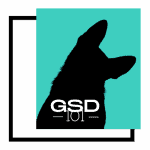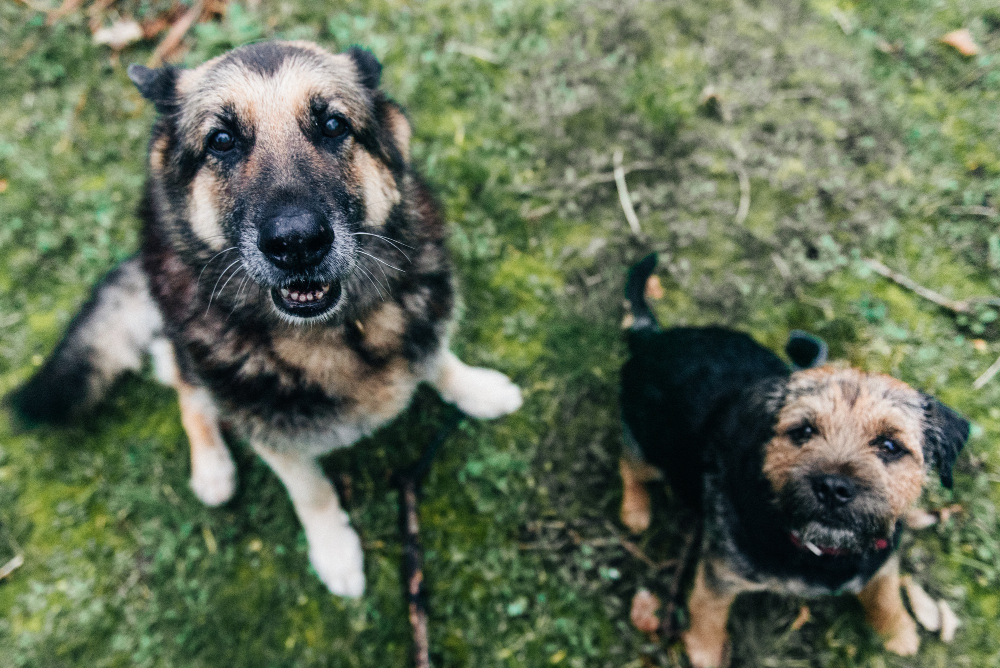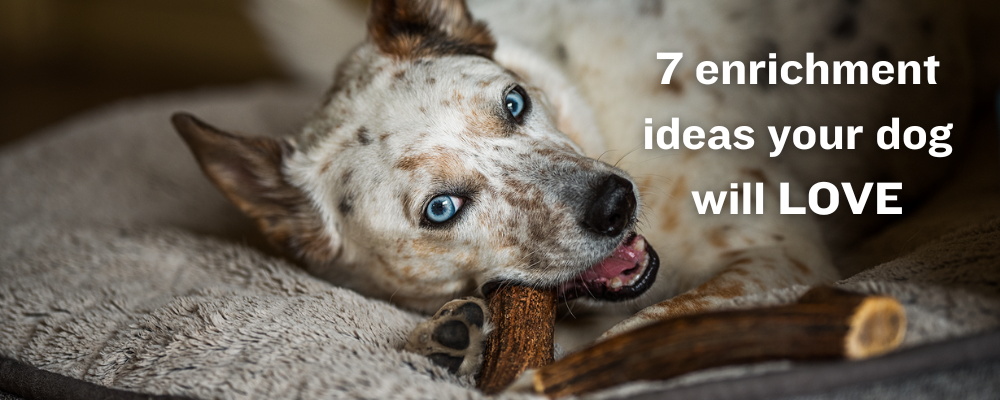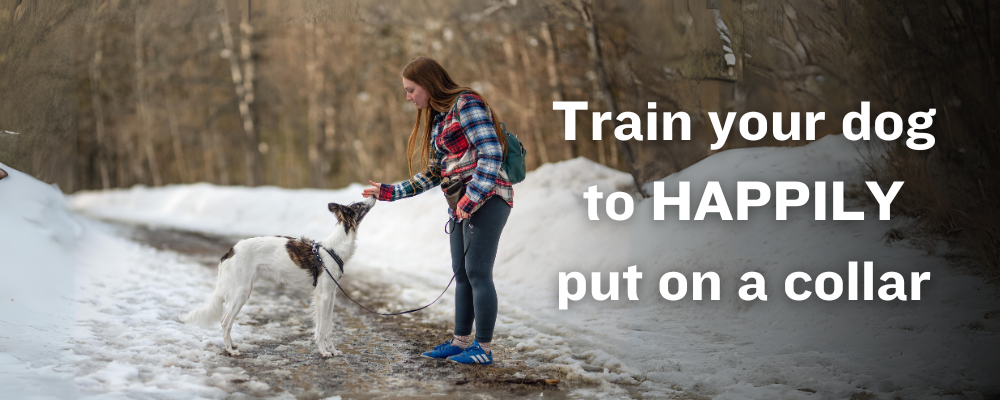If you own a German Shepherd, are worried about bringing a new dog into your house? Or are you bringing a German Shepherd home and are worried about how your other dog(s) will react to the new GSD? The good news is that you can keep everything under control if you correctly introduce them and create a friendly space for the two to interact.
When introducing your German Shepherd to your other dog at home, you should try to be assertive while staying calm. Start off with putting your GSD on a leash, or having a barrier between the two dogs. German Shepherds usually familiarize themselves with other dogs if you guide them.
Read further to determine just how to make introductions, correctly socialize, and ensure all your fur babies are the best of friends.
Are German Shepherds Good With Other Dogs?
Familiarizing a GSD with other dogs and training them to get along is easy if you’re following the correct techniques.
The good news is, GSDs have several qualities that make them the best house pets one could have. Deeply intelligent, fiercely loyal, and well-suited as both guard and therapy dogs, GSDs are wonderful companions. However, they can be anti-social and territorial as working dogs or guard dogs, if they aren’t socialized properly.
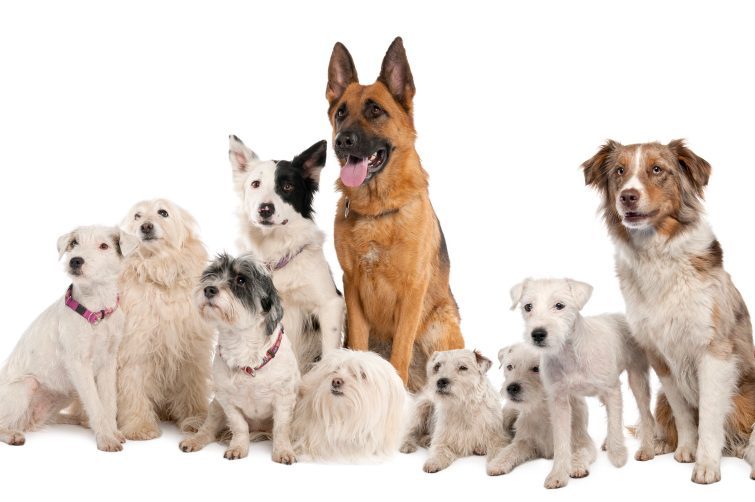
In addition to this, they are high-energy dogs, so playing with other furry friends is good for them. But they usually prefer being around familiar dogs and can act aggressively in unfamiliar company.
Some dogs may be more unfriendly to dogs of the same sex, and others may have a prey drive that gets triggered every time there’s a smaller dog in their space.
German Shepherds are also sociable and friendly and get along well with other dogs.
What Are German Shepherds Like With Other Dogs?
It’s hard to go into detail about how a GSD may react to different kinds of dogs. Here’s a brief overview based on dog sizes.
Small dogs
GSDs are big dogs- and that’s important to keep in mind when you’re bringing them near a smaller breed of dog in your house, or introducing them to a friend’s smaller dog. GSDs usually think of smaller dogs either as prey or playthings. They are big boys, and smaller dogs fear them! Hence, you should never leave a GSD unsupervised with a smaller dog.
If your GSD reacts aggressively, immediately remove him from the company of the smaller dog. If all goes well and they are busy sniffing each other and growling a bit, only step in when necessary. Your dog only needs time to familiarize himself with the tiny specimen he is facing off with before they become the best of buds!
Medium dogs
It is better to introduce your German shepherds to medium-sized dogs first. They’re not big enough to intimidate your dog, nor small enough for your GSD to think they are a toy.
Remember, interactions with dogs of all sizes are different since their temperaments and socialization are different. Dogs that are of a calmer temperament and are medium-sized, like Labradors or Golden Retrievers, are suitable dogs to introduce to your GSD.
Large dogs
Large and giant breeds are the least likely to be at risk near your GSD because they are of an equal size. However, since larger breeds usually have the same dominant and territorial characteristics as your GSD, they can get aggressive around each other and act dominant.
Fights can break out if your GSD isn’t properly socialized or the dog he’s meeting is hostile. Since big dogs can seriously harm each other you should never introduce them without training and caution. If the dogs start growling and barking at each other, you should immediately intervene and keep them away.
How To Introduce Your GSD To Other Dogs
Along with the size of other dogs, the atmosphere also plays a key role in pet socialization. Here’s how you can introduce your German to other dogs in different settings.
When Away From Home
Since GSDs have territorial traits, it’s recommended that you introduce them to other dogs outside the home. Instead of defending their territory, the dogs will only focus on the introduction and will think of the interaction as a playdate instead of their space being infiltrated.
The key to introducing two dogs outside is to:
- Take it slow and steady: Don’t rush to get them off their leash, even if all signs point to friendly behavior. The first few moments are always tense as the two dogs size each other up, so don’t worry too much.
- If the dogs become too aggressive, keep them at a safe distance from each other so they can relax a bit.
- Install barriers between the two dogs so they don’t take a swing at each other.
- If they seem to be getting along but things escalate quickly, use a ball or a loud sound to distract their attention and take them both out of the space.
- If they seem calm and relaxed with each other, take that as a signal to let them play together.
Tips For Home Introductions
If you are introducing a new dog to one that already lives at home (or even several of them), it can be a very exciting experience. Things can, however, go south if the dogs take an instant dislike to each other. For smooth at-home introductions:
- Acknowledge that the dog already living at home thinks the place is his territory. It may be disturbing to have to welcome another dog to his space.
- Keep interactions well-supervised, and be patient while the dogs get introduced to each other.
- Make sure the dogs are both adequately trained, and at a respectable distance from each other.
- Make sure you are prepared to intervene if things get too growly.
- Ideally, in the beginning, make sure your dogs aren’t getting lumped in together.
Also, separate their toys, beds, and food bowls so the dogs don’t fight over these things.
Helping Your German Shepherd Socialize
Helping your GSD socialize isn’t the hardest thing in the world. All they need is some attention. Here’s how to make sure your GSD is socializing properly:
Vaccination
Make sure young dogs being introduced to each other are fully vaccinated before any contact with other dogs.
Start Early
Starting the socialization process young prevents your dogs from seeing other dogs as threats.
Check the Temperament
Make your dog meet others that are known to be of a friendly temperament.
Seek Friendly Spaces
To prevent any bad first interactions with other dogs, introduce any new dogs in neutral spaces.
Seek Precautionary Measures (gates, leashes, etc.)
Finally, keep things safe by installing some preventative measures:
- When necessary, keep the leash on to prevent both dogs from attacking each other.
- Know when to intervene and put a stop to the interaction.
- Set up barriers between the two dogs, such as dog gates.
You also don’t want your dog to associate excessive anxiety, aggression, and panic with the experience of meeting another dog. Remember that the first interaction can be nerve-wracking.
Some warning signs to watch out for:
- Fear and aggression towards other dogs
- Fright at unfamiliar sounds and smells
- Uneasiness when out for walks
- Acting territorial
- Being very aggressive or too submissive towards other dogs
Just because you’d love for your dog to socialize and understand it to be good for his development, don’t force it.
Conclusion
That’s all for answering the question of whether GSDs get along well with other dogs. It’s a question of time, patience, space, and temperament and can be easily improved through proper socialization.
